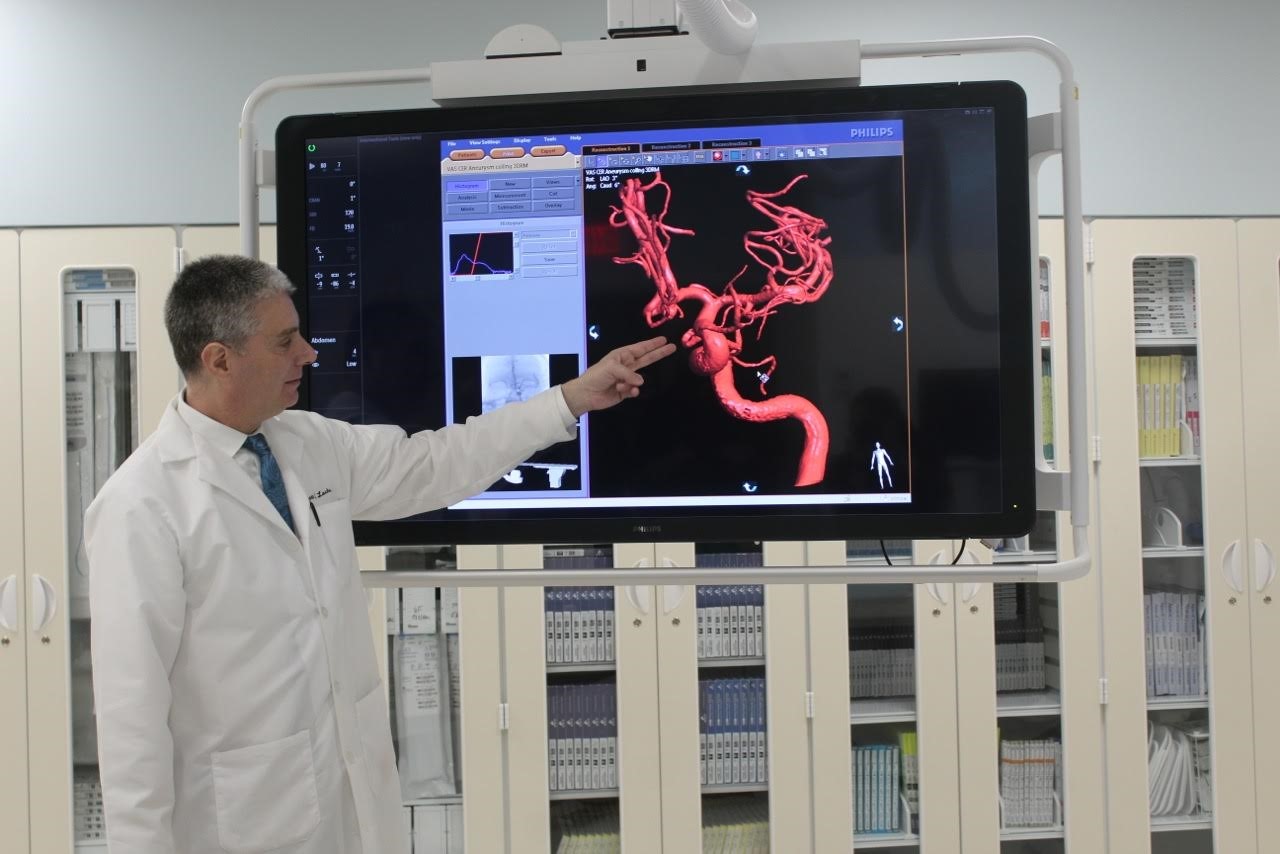health
Tech Revolutionizing Emergency Care

In the ever-evolving landscape of healthcare, emergency medicine stands as a critical frontier where technological advancements can have immediate and life-saving impacts. The integration of cutting-edge technologies in emergency departments (EDs) has transformed the way medical professionals diagnose, treat, and manage acute medical conditions. This article delves into the latest advancements in emergency medicine technology, focusing on key innovations that are revolutionizing patient care.
Telemedicine and Remote Monitoring
One of the most significant advancements in emergency medicine is the adoption of telemedicine and remote monitoring technologies. Telemedicine allows for real-time consultations between emergency physicians and specialists, regardless of geographical barriers. This is particularly beneficial in rural or underserved areas where access to specialized care is limited.
Remote monitoring technologies, such as wearable devices and mobile health apps, enable continuous tracking of vital signs and other health metrics. These tools allow for early detection of potential health issues, enabling timely interventions. For instance, patients with chronic conditions like heart disease can be monitored remotely, reducing the likelihood of emergency visits and hospital readmissions.
Artificial Intelligence and Machine Learning
Artificial intelligence (AI) and machine learning (ML) are making significant inroads into emergency medicine. AI algorithms can analyze vast amounts of data quickly and accurately, assisting in the diagnosis and treatment of complex medical conditions. For example, AI-driven diagnostic tools can interpret medical imaging, such as X-rays and CT scans, with a high degree of accuracy, often surpassing human capabilities.
Machine learning models can also predict patient outcomes based on historical data, helping emergency physicians make informed decisions. Predictive analytics can identify patients at high risk of complications, enabling proactive management and improving overall patient outcomes. Additionally, AI-powered chatbots can assist in triaging patients, ensuring that those with the most urgent needs receive immediate attention.
Portable Diagnostic Devices
The development of portable diagnostic devices has been a game-changer in emergency medicine. These compact, easy-to-use devices allow for rapid diagnosis at the point of care, significantly reducing the time to treatment.
Portable ultrasound machines, for example, are now commonly used in EDs to quickly assess internal injuries and conditions. Similarly, handheld ECG devices enable rapid cardiac assessments, crucial for diagnosing and managing heart attacks. These devices not only expedite the diagnostic process but also enhance the accuracy of initial assessments, leading to better patient outcomes.
Advanced Imaging Technologies
Advanced imaging technologies have also made significant strides, offering emergency physicians more detailed and accurate diagnostic information. High-resolution CT scanners, for instance, provide detailed images of internal organs, bones, and tissues, aiding in the rapid diagnosis of conditions such as strokes, fractures, and internal bleeding.
Magnetic resonance imaging (MRI) has also seen advancements, with faster scan times and improved image quality. These improvements enable quicker diagnosis and treatment, particularly for conditions that require detailed imaging, such as spinal injuries and brain hemorrhages.

Picture by: Yandex.com
Electronic Health Records (EHRs) and Health Information Exchange (HIE)
The implementation of electronic health records (EHRs) and health information exchange (HIE) systems has streamlined the flow of information within emergency departments. EHRs provide a comprehensive view of a patient’s medical history, allergies, medications, and previous treatments, enabling emergency physicians to make informed decisions quickly.
HIE systems facilitate the secure sharing of patient information between different healthcare providers and institutions. This interoperability ensures that emergency physicians have access to the most up-to-date information, reducing the risk of medical errors and improving coordination of care.
Simulation-Based Training
Simulation-based training has become an integral part of emergency medicine education. High-fidelity simulators and virtual reality (VR) environments provide realistic training scenarios for medical professionals. These technologies allow for the practice of complex procedures and decision-making skills in a controlled, risk-free environment.
Simulation-based training enhances the preparedness of emergency physicians, nurses, and other healthcare professionals, ensuring they are equipped to handle a wide range of medical emergencies. This hands-on experience is invaluable in improving clinical skills and boosting confidence in real-life situations.
Mobile Stroke Units
Mobile stroke units (MSUs) represent a significant advancement in the pre-hospital management of stroke patients. These specialized ambulances are equipped with advanced imaging technology, such as portable CT scanners, and staffed by a team of stroke specialists. MSUs enable the rapid diagnosis and treatment of stroke patients at the scene, significantly reducing the time to intervention and improving outcomes.
By administering clot-busting drugs or other treatments en route to the hospital, MSUs can reduce the severity of stroke-related disabilities and increase the likelihood of full recovery. This innovative approach to stroke care exemplifies the potential of mobile healthcare technologies in emergency medicine.
Conclusion
The advancements in emergency medicine technology are reshaping the way healthcare professionals deliver care in critical situations. From telemedicine and AI to portable diagnostic devices and advanced imaging technologies, these innovations are enhancing the speed, accuracy, and effectiveness of emergency medical care.
As technology continues to evolve, it is imperative for emergency departments to stay abreast of these developments and integrate them into their practices. By embracing these advancements, emergency medicine can continue to improve patient outcomes, reduce healthcare costs, and save lives. The future of emergency medicine is undoubtedly intertwined with technology, promising a new era of enhanced care and innovation.
health
X-Vir tablets: Better Liver Health and Viral Suppression

Introduction
The liver plays a crucial role in maintaining the body’s overall health, performing vital functions such as detoxification, metabolism, and nutrient storage. However, chronic Hepatitis B Virus (HBV) infection can significantly impair liver function, leading to long-term complications like cirrhosis or liver cancer.
To manage this condition effectively, antiviral medications such as X-Vir tablets have become a cornerstone of treatment. Trusted by healthcare professionals worldwide, X-Vir tablets wholesaler supply ensures timely and affordable access to this essential medicine for patients battling chronic HBV infection.
Understanding Hepatitis B and Its Impact on Liver Health
Hepatitis B is a viral infection that attacks the liver and can cause both acute and chronic diseases. Chronic HBV infection occurs when the immune system fails to completely clear the virus from the body, allowing it to persist and damage liver cells over time. This ongoing infection can lead to fibrosis, cirrhosis, or even liver cancer if left untreated.
While lifestyle management and regular monitoring are important, antiviral therapy remains the most effective approach to control viral replication and reduce liver inflammation. That’s where X-Vir tablets play a vital role.
What Are X-Vir Tablets?
X-Vir tablets contain Entecavir, a potent antiviral agent that inhibits the replication of the Hepatitis B Virus in the body. Entecavir belongs to a class of drugs known as nucleoside analogues, which work by blocking the enzyme responsible for viral DNA synthesis. This action prevents the virus from multiplying, helping to lower HBV levels in the blood and reduce liver damage.
Physicians often recommend X-Vir for:
- Patients diagnosed with chronic Hepatitis B infection
- Individuals showing active viral replication and liver inflammation
- Patients with cirrhosis or previous treatment failure with other antiviral agents
By targeting the virus directly, X-Vir helps patients regain liver function, lower viral load, and prevent disease progression.
How X-Vir Tablets Work
X-Vir tablets are formulated to target two main areas: liver support and viral suppression. Here’s how they work:
- Liver Support: The ingredients in X-Vir tablets help strengthen liver cells, improve detoxification processes, and enhance the liver’s ability to metabolize nutrients and medications efficiently. Regular use may reduce liver inflammation and protect against further damage.
- Viral Suppression: X-Vir contains components that work to inhibit viral replication. By reducing viral load, the tablets help prevent the virus from spreading and damaging liver cells. This contributes to better overall liver function and reduces the risk of long-term liver diseases.
- Antioxidant Properties: Oxidative stress can harm liver cells and accelerate liver damage. X-Vir tablets often contain antioxidants that neutralize free radicals, protecting liver cells and supporting cellular repair processes.
- Immune System Support: A strong immune system is essential to fight viral infections. X-Vir helps enhance immunity, giving the body a better chance to control viral activity and maintain liver health.
Benefits of X-Vir Tablets
- Effective Viral Suppression: X-Vir is clinically proven to significantly reduce HBV DNA levels in the blood, helping patients maintain better liver function and improving long-term survival outcomes.
- Protection Against Liver Damage: By controlling viral replication, X-Vir minimizes inflammation and scarring of the liver tissue, reducing the risk of cirrhosis and liver failure.
- Improved Immune Response: Consistent therapy with X-Vir supports the immune system’s ability to fight infection, leading to improved resistance against further liver damage.
- Long-Term Stability: X-Vir’s strong antiviral effect ensures sustained suppression of HBV, providing stability and reducing the chances of relapse.
- Well-Tolerated Therapy: Most patients tolerate X-Vir well, with minimal side effects compared to other antiviral medications. This makes it an ideal choice for long-term treatment plans.
Dosage and Administration
The usual recommended dose of X-Vir is 0.5 mg to 1 mg once daily, depending on the patient’s condition and prior treatment history. It should be taken on an empty stomach, at least two hours before or after a meal, for optimal absorption.
Patients are advised not to discontinue treatment without consulting their doctor, as sudden withdrawal can lead to viral rebound and worsening of liver function. Regular monitoring of liver enzymes and viral load is essential throughout therapy.
Possible Side Effects
While X-Vir tablets are generally safe, some patients may experience mild side effects such as:
- Headache
- Fatigue
- Dizziness
- Nausea
- Sleep disturbances
In rare cases, serious effects like lactic acidosis or liver enlargement may occur. Patients should immediately seek medical advice if they experience unusual symptoms like rapid breathing, muscle pain, or yellowing of the skin.
Future of X-Vir in HBV Treatment
The future of chronic Hepatitis B treatment continues to evolve with ongoing research into combination therapies, vaccines, and potential cures. However, X-Vir tablets remain one of the most reliable and evidence-backed medications available today. Their proven effectiveness, affordability, and wide availability through X-Vir tablets wholesalers make them a cornerstone of modern liver health management.
As global access to antiviral therapy expands, X-Vir will continue to play a crucial role in reducing the global burden of HBV and improving patients’ quality of life.
Global Access and Reliable Supply
Access to life-saving medicines like X-Vir is essential for effective HBV management. Many reputable pharmaceutical suppliers ensure a steady global supply of X-Vir tablets, making it available to patients and healthcare institutions worldwide.
If you are looking for a reliable X-Vir supplier, Specialitymedz stands out as a trusted name. They specialize in providing high-quality antiviral medications, ensuring authenticity, affordability, and timely delivery for global healthcare needs.
Conclusion
X-Vir tablets represent a powerful defense against chronic Hepatitis B infection, offering patients renewed liver strength and long-term stability. With consistent use and medical supervision, X-Vir helps control the virus, protect liver function, and prevent life-threatening complications.
For reliable and high-quality access to X-Vir tablets, patients and healthcare providers can trust SpecialityMedz a leading pharmaceutical exporter and supplier dedicated to delivering safe, effective, and affordable antiviral medications worldwide. With Specialitymedz, patients can continue their journey toward healthier, stronger liver function and a better quality of life.
health
Fracture and Chest Pain Treatment in Nagarabhavi

Introduction
Medical emergencies require prompt action and expert care. Whether you’ve suffered a bone fracture or experiencing chest discomfort, having access to quality healthcare services in your area is crucial. Finding reliable fracture treatment Nagarabhavi and a trusted chest pain doctor in Nagarabhavi ensures you receive timely medical intervention when every moment counts.
Expert Fracture Treatment Services
Accidents happen unexpectedly, and when they result in broken bones, immediate professional care is essential. Quality fracture treatment Nagarabhavi includes comprehensive services from initial assessment to complete recovery. Experienced orthopedic specialists use digital X-rays to accurately diagnose the type and severity of fractures, whether simple or compound. Treatment options include casting, splinting, or surgical fixation depending on your condition. Modern fracture care focuses on proper alignment, immobilization, and structured rehabilitation to ensure bones heal correctly and you regain full functionality.
Understanding Different Types of Fractures
Fractures come in various forms, each requiring specific treatment approaches. Closed fractures occur when the bone breaks but doesn’t pierce the skin, while open fractures involve bone fragments breaking through the skin surface, requiring immediate surgical intervention to prevent infection. Hairline fractures are minor cracks in the bone that may not be immediately visible but cause significant discomfort. Comminuted fractures involve the bone breaking into multiple pieces, often requiring surgical pins or plates for proper healing. Understanding the type of fracture you have helps your doctor determine the most effective treatment plan.
The Recovery Process
Fracture healing typically occurs in stages, beginning with inflammation and clot formation at the injury site. Over the following weeks, soft callus forms around the broken bone, gradually hardening into new bone tissue. Complete healing can take anywhere from six weeks to several months depending on the fracture’s severity, location, and your overall health. During recovery, proper nutrition rich in calcium and vitamin D, adequate rest, and following medical advice are crucial for optimal healing outcomes.
Specialized Care for Chest Pain
Chest pain should never be ignored as it can indicate various conditions ranging from minor muscular issues to serious heart problems. A qualified chest pain doctor in Nagarabhavi will conduct thorough evaluation including physical examination, ECG, blood tests, and other necessary diagnostics to determine the cause. Whether your chest pain stems from cardiac issues, respiratory problems, acidity, anxiety, or muscle strain, proper diagnosis is critical for appropriate treatment. These specialists can differentiate between emergency situations requiring immediate intervention and conditions that can be managed with medication and lifestyle changes.
Common Causes of Chest Pain
While heart-related issues are the most concerning cause of chest pain, many other conditions can produce similar symptoms. Gastroesophageal reflux disease or severe acidity can cause burning chest discomfort that mimics heart problems. Anxiety and panic attacks often manifest as chest tightness accompanied by rapid heartbeat and breathing difficulties. Costochondritis, an inflammation of the cartilage connecting ribs to the breastbone, causes sharp chest pain that worsens with movement or deep breathing. Respiratory conditions like pneumonia, pleurisy, or pulmonary embolism can also cause chest discomfort along with breathing difficulties.
When to Seek Immediate Help
Certain chest pain symptoms require emergency medical attention. If you experience crushing chest pain radiating to your jaw, neck, or left arm, accompanied by sweating, nausea, or shortness of breath, seek immediate care as these could indicate a heart attack. Sudden severe chest pain with difficulty breathing might signal a pulmonary embolism or collapsed lung. Even if you’re unsure about the severity, it’s always better to get evaluated by a chest pain doctor rather than risk a potentially serious condition.
Why Local Emergency Care Matters
Having access to fracture treatment and chest pain specialists in Nagarabhavi means reduced travel time during emergencies. Quick medical attention for fractures prevents complications like improper healing, while timely evaluation of chest pain can be life-saving. Local healthcare facilities understand community needs and provide personalized care with easier follow-up appointments.
Advanced Diagnostic Facilities
Modern medical facilities in Nagarabhavi are equipped with advanced diagnostic tools that enable quick and accurate assessment. Digital X-ray machines provide instant imaging for fracture evaluation, while ECG machines help detect heart irregularities immediately. Blood test facilities can quickly check cardiac enzymes and other markers that indicate heart problems. CT scans and ultrasound equipment further aid in diagnosing complex conditions, ensuring you receive accurate diagnosis without needing to travel to distant hospitals.
Comprehensive Follow-Up Care
Both fracture recovery and chest pain management require ongoing monitoring. Quality healthcare providers ensure proper healing through regular check-ups, physiotherapy referrals for fractures, and cardiac rehabilitation or lifestyle counseling for heart-related concerns.
Preventive Measures and Lifestyle Changes
Prevention is always better than cure. For bone health, maintaining adequate calcium and vitamin D intake, regular weight-bearing exercises, and fall prevention strategies reduce fracture risk, especially in older adults. For heart health, managing stress, maintaining healthy weight, regular exercise, balanced diet low in saturated fats, avoiding smoking, and controlling conditions like diabetes and hypertension significantly reduce chest pain episodes and heart disease risk.
Don’t delay seeking medical help during emergencies. Whether you need fracture treatment Nagarabhavi or consultation with a chest pain doctor in Nagarabhavi, immediate professional care ensures better outcomes and faster recovery. Your health and safety are paramount.
health
Trusted Sexologist in Gurgaon for Couples Mantra Ayurveda

Introduction
In today’s modern world, conversations around sexual health are finally beginning to open up — yet many couples still hesitate to seek professional help when facing intimacy or performance issues. The truth is, sexual health is an essential part of overall well-being, and just like any other medical concern, it deserves expert attention and care.
If you’re looking for the best sexologist in Gurgaon, Mantra Ayurveda stands out as a trusted name in holistic sexual wellness. Combining the ancient wisdom of Ayurveda with modern diagnostic techniques, Mantra Ayurveda offers confidential, compassionate, and effective treatment for men, women, and couples struggling with sexual health challenges.
Understanding the Importance of Sexual Wellness
Sexual wellness is not just about intimacy it’s about maintaining emotional balance, confidence, and healthy relationships. Many couples experience issues such as:
- Low libido or decreased desire
- Erectile dysfunction or premature ejaculation
- Pain during intercourse
- Infertility or conception difficulties
- Relationship stress due to physical dissatisfaction
Unfortunately, stigma often prevents people from seeking timely treatment. Consulting the best sexologist in Gurgaon ensures that such issues are identified early and managed effectively with personalized care and discretion.
Why Choose Mantra Ayurveda in Gurgaon?
At Mantra Ayurveda, sexual wellness is treated as a holistic part of health — involving the mind, body, and emotions. The clinic’s specialists blend traditional Ayurvedic therapies with modern medical insights to provide sustainable results without side effects.
Here’s what makes Mantra Ayurveda the preferred choice for couples in Gurgaon:
1. Expert Ayurvedic Sexologists
The team at Mantra Ayurveda includes experienced practitioners recognized among the best sexologists in Gurgaon. Their deep understanding of Ayurvedic science allows them to treat root causes, not just symptoms, ensuring lasting improvement in sexual health.
2. Personalized Diagnosis and Treatment
No two individuals or couples are the same. The specialists conduct a thorough assessment — considering physical health, emotional state, and lifestyle — before creating a customized treatment plan.
3. Confidential and Supportive Environment
Privacy and comfort are priorities at Mantra Ayurveda. Every consultation is handled with professionalism and confidentiality, helping clients feel relaxed and respected.
4. Holistic Healing Approach
Beyond medical treatment, patients receive guidance on diet, lifestyle changes, stress management, and natural remedies to promote long-term vitality and hormonal balance.
5. Proven Ayurvedic Therapies
Treatments often include powerful Ayurvedic formulations like Ashwagandha, Shilajit, Gokshura, and Safed Musli, which enhance stamina, reproductive health, and mental clarity.
Common Conditions Treated by the Best Sexologist in Gurgaon
The sexologists at Mantra Ayurveda address a wide range of male and female sexual health concerns with proven Ayurvedic solutions:
1. For Men
- Erectile Dysfunction (ED): Treated through natural herbs and therapies that improve blood flow and energy levels.
- Premature Ejaculation (PE): Ayurvedic medicines and relaxation techniques are prescribed to increase endurance.
- Low Libido: Holistic remedies to enhance vitality and restore confidence.
- Infertility: Therapies to improve sperm quality, count, and overall reproductive health.
2. For Women
- Low Sexual Desire: Balancing hormones and addressing emotional factors through herbal tonics and stress management.
- Painful Intercourse: Gentle treatments that focus on lubrication, relaxation, and hormonal balance.
- Menstrual Irregularities: Addressed through Ayurvedic detox and herbal remedies to regulate cycles and improve fertility.
3. For Couples
Mantra Ayurveda also specializes in couple therapy, helping partners rebuild intimacy, trust, and communication. Through joint counseling sessions and tailored treatments, couples can restore both physical satisfaction and emotional connection.
The Ayurvedic Advantage in Sexual Wellness
Ayurveda views sexual health as an integral part of the body’s overall energy — the balance of Vata, Pitta, and Kapha doshas. Imbalances in these energies often lead to physical and emotional disturbances affecting sexual function.
The best sexologist in Gurgaon at Mantra Ayurveda uses time-tested Ayurvedic principles to restore this balance naturally. Therapies may include:
- Rasayana Therapy: Rejuvenation therapy to boost vitality and immunity.
- Vajikarana Therapy: Specialized Ayurvedic treatment focused on enhancing sexual performance and fertility.
- Panchkarma Detox: Deep cleansing therapies that eliminate toxins and improve hormonal balance.
- Herbal Supplements: Safe, non-addictive herbs that improve stamina, endurance, and mental well-being.
These holistic treatments help achieve long-term improvement rather than temporary relief, making Ayurveda a preferred choice for many couples today.
Benefits of Consulting the Best Sexologist in Gurgaon
Seeking help from a professional is not a sign of weakness it’s a step toward taking charge of your health and happiness. Here’s what you gain from consulting an expert like those at Mantra Ayurveda:
- Accurate diagnosis of underlying causes
- Safe and natural treatment options
- Enhanced sexual performance and confidence
- Strengthened emotional bond with your partner
- Improved overall physical and mental wellness
By addressing both the physiological and psychological aspects, Mantra Ayurveda ensures complete healing for every patient.
When to See a Sexologist
You should consider visiting the best sexologist in Gurgaon if you or your partner experience:
- Persistent performance issues or lack of desire
- Emotional disconnect or anxiety related to intimacy
- Fertility challenges
- Dependence on medications or supplements without results
- Unexplained sexual discomfort or pain
The sooner you seek help, the faster and more effectively these concerns can be managed.
Why Couples Trust Mantra Ayurveda
Over the years, Mantra Ayurveda has earned a reputation as one of Gurgaon’s most trusted centers for sexual health and Ayurvedic wellness. The clinic’s compassionate team, ethical practice, and consistent results have helped countless couples regain confidence and intimacy.
Every treatment journey here is private, personalized, and focused on building long-term wellness — not just temporary fixes.
FAQs
Q1. Is visiting a sexologist in Gurgaon confidential?
Yes, at Mantra Ayurveda, your privacy is fully protected. All consultations and treatments are conducted with strict confidentiality.
Q2. How long does it take to see results from Ayurvedic treatment?
Most patients notice positive changes within a few weeks, though complete results depend on the severity of the issue and consistency with treatment.
Q3. Are Ayurvedic sexual health treatments safe?
Absolutely. Ayurvedic remedies are natural and free from harmful chemicals or side effects when prescribed by qualified practitioners.
Q4. Can stress cause sexual problems?
Yes. Stress, anxiety, and poor lifestyle habits are major causes of sexual dysfunction. Ayurvedic therapies help reduce stress and restore balance.
Q5. Can couples undergo treatment together?
Yes. Mantra Ayurveda offers couple consultations to address shared concerns and improve relationship satisfaction holistically.
Conclusion
Sexual health plays a vital role in overall well-being and relationship happiness. At Mantra Ayurveda, the focus is on restoring balance, confidence, and harmony through time-tested Ayurvedic wisdom and compassionate care.
If you’re searching for the best sexologist in Gurgaon, trust the experts at Mantra Ayurveda — where healing goes beyond medicine to help couples rediscover intimacy, energy, and emotional connection naturally.
-
Business2 years ago
Cybersecurity Consulting Company SequelNet Provides Critical IT Support Services to Medical Billing Firm, Medical Optimum
-
Business2 years ago
Team Communication Software Transforms Operations at Finance Innovate
-
Business2 years ago
Project Management Tool Transforms Long Island Business
-
Business2 years ago
How Alleviate Poverty Utilized IPPBX’s All-in-One Solution to Transform Lives in New York City
-
health2 years ago
Breast Cancer: The Imperative Role of Mammograms in Screening and Early Detection
-
Sports2 years ago
Unstoppable Collaboration: D.C.’s Citi Open and Silicon Valley Classic Unite to Propel Women’s Tennis to New Heights
-
Art /Entertainment3 years ago
Embracing Renewal: Sizdabedar Celebrations Unite Iranians in New York’s Eisenhower Park
-
Finance3 years ago
The Benefits of Starting a Side Hustle for Financial Freedom










































